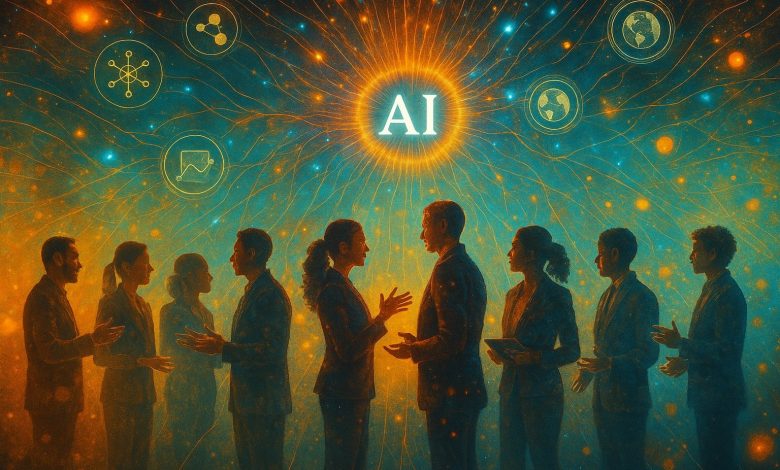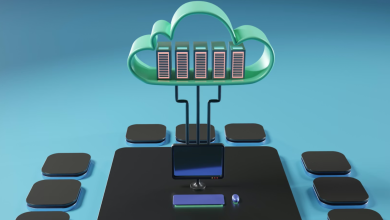
Navigating the New Leadership Landscape
Today’s leaders must navigate rapid technology shifts, strategize to stay ahead of competitors, and thwart cyberattacks, all while adjusting to geopolitical pressures and engaging an aging, diverse workforce. Now, they must shift from digital transformation to AI transformation, weaving AI into strategy while inspiring a workforce that may feel tired, jaded, or skeptical.
In 2018, MIT researcher Thomas Malone described a future where artificial intelligence (AI) and humans would work together, creating a supermind—a collective intelligence where computers join human teams in solving problems and generating new ideas. Similarly, Deloitte’s 2023 Global Human Capital Trends report urged leaders to see technology as a way to make work “better for humans” while strengthening performance, creativity, and leadership. As Industry 4.0 yields to Industry 5.0, this mindset shift has never been more urgent.
Why Growth Mindset Isn’t Enough
The corporate world is embracing growth mindset, popularized by Carol Dweck and elevated by leaders like Satya Nadella at Microsoft. Growth mindset—the belief that skills and intelligence can be developed through effort—has been shown to support adaptability and transformational leadership.
But my research found that growth mindset alone isn’t the strongest driver of innovative thinking. Among working professionals, growth mindset correlated with adaptability, but the highest innovative thinking scores appeared when growth mindset was paired with curiosity about AI. In other words: adaptability is necessary, but curiosity about AI provides the spark that fuels creativity, problem-solving, and forward-looking innovation.
The Curiosity Factor: Why Interest in AI Outpaces Mindset Alone
Innovative thinking is comprised of a set of durable skills: noticing, experimenting, questioning, and networking. Noticing, experimenting, and questioning are also qualities of a growth mindset. They are human capabilities that allow leaders to see patterns, test ideas, and challenge assumptions.
My research revealed that a growth interest in AI—an individual’s curiosity and willingness to learn about AI—was more strongly associated with innovative thinking than a general growth mindset alone. Working professionals who expressed curiosity about AI were more likely to experiment with new tools, ask deeper questions about applications, and reframe challenges as opportunities. They were investing time learning on their own rather than waiting for a reason.
This suggests that curiosity in AI (and possibly other areas) may be the missing link between mindset and innovation. In my own work, I describe this as activating our curiosity circuits—the mental pathways we engage when we notice patterns, ask better questions, and test new ideas. When leaders model curiosity, they signal to their teams that these circuits are safe to use, even when experiments fail.
Are you more excited than concerned about the possibilities AI will introduce to your industry over the next few years?
Leaders don’t have to be AI experts. But they do need to be open, interested, and willing to fail. It means they need the curiosity to explore how AI could reshape processes, products, and even their own leadership practices.
Leadership Blindspots: Fear of Failure and Ageism
Fixed-mindset leaders often fear AI, struggle to see employees as capable of growth, and resist experimentation. This shows up in two costly blindspots:
- Underestimating Employees. Leaders with fixed mindsets struggle to recognize improvement in their people. They may penalize failure rather than seeing it as part of learning and limit opportunities for development. The result: employee engagement declines, innovation stalls, and new ideas stop coming.
- Age-Related Bias. A second blind spot emerges when leaders assume older workers can’t—or won’t—adapt to AI. Research shows otherwise. An HBR article reported on a study of more than 2,600 midcareer and older workers: while employers overwhelmingly preferred younger candidates for AI-related roles, older employees performed just as well—or better—once on the job. Some even became self-taught AI power users, adopting tools weekly or daily to improve decision-making and efficiency.
The World Economic Forum underscores that “age-proofing AI” is not just a moral imperative but a business necessity. With 2 billion people projected to be over 60 by 2050, inclusive AI design and training are critical for innovation and competitiveness.
In my own research, curiosity about AI spanned across generations. Leaders who assume older employees won’t be curious risk missing out on some of their most innovative thinkers. When fear of failure and ageism combine, organizations don’t just alienate talent, they slow their capacity to innovate.
Why Training Alone Isn’t Enough
Given the rapid proliferation of AI agents and tools, it’s no surprise that individuals are experimenting on their own resulting in pressure for organizations to have a strategy for how AI may be used in the workplace. One issue is that many companies jumped into AI before they had a strategy, and are now disappointed that the promise of productivity improvements or breakthrough ideas haven’t emerged.
Corporate training often focuses on specific tools or platforms— “learn this new AI application.” But my findings suggest that this narrow approach won’t drive transformation. Without cultivating curiosity, building trust, and fostering a growth mindset, training falls flat.
Leaders need to model experimentation themselves. Sharing both successes and failed attempts at using AI tools can lower anxiety and build trust. When leaders create safe-to-fail environments, employees feel empowered to try new approaches without fear of judgment. This cultural shift is what allows tools + mindset to equal transformation.
So, what does this look like in practice? Here are four strategies that leaders can apply to make AI curiosity part of their AI transformation plan.
Practical Strategies for Fostering AI Curiosity
Leaders can take tangible steps to nurture AI curiosity in their organizations:
- Safe-to-Fail Pilots: Frame AI experiments as learning opportunities rather than high-stakes projects.
- Coaching-Style Check-Ins: Use one-on-one or team check-ins to ask what employees are noticing, questioning, or experimenting with.
- Reward Exploration: Celebrate effort and insight, not just results. Highlight creative applications of AI even when outcomes are imperfect. Have employees share their favorite tools in monthly lunch and learn sessions.
- Cross-Generational Teams: Pair employees across age groups to explore AI tools together, breaking stereotypes and fostering mutual learning.
By normalizing curiosity and experimentation, leaders can unlock innovative thinking at scale.
As a leader, are you dedicating time to learning and experimenting with AI tools?
The Next Leadership Edge
The shift from Industry 4.0 to Industry 5.0 is not about smarter machines, it’s about smarter leadership. Growth mindset lays the foundation, but curiosity about AI brings the edge. Leaders who cultivate both, activating their curiosity circuits, will be better positioned to build resilient teams, unlock hidden innovators, and succeed in our VUCA landscape.
The next leadership edge won’t come from mastering every tool. It will come from modeling curiosity, asking better questions, and encouraging teams to explore what’s possible with AI.
So, the question is: Are you building your edge? The edge isn’t in competing with AI, but in leading with the curiosity to harness it.




